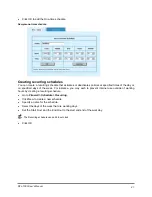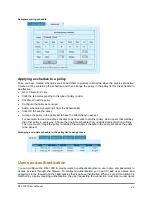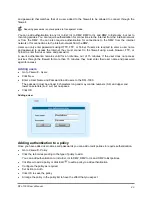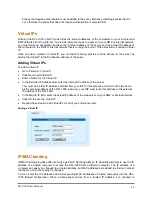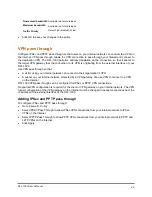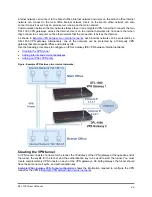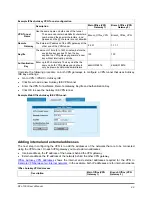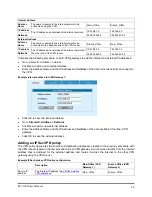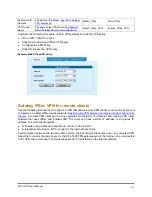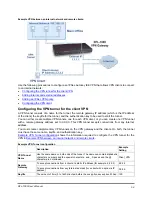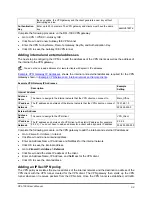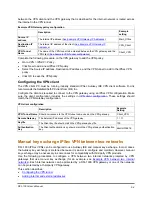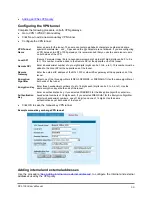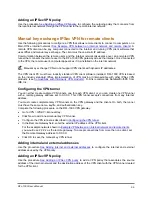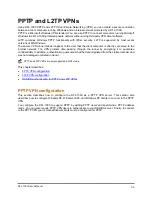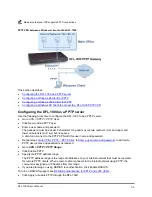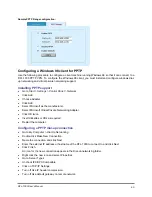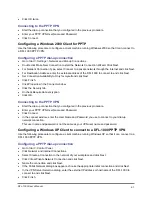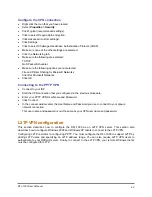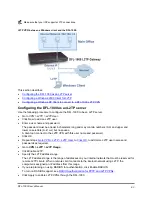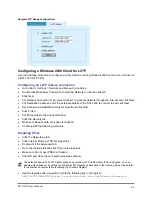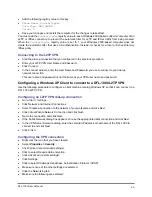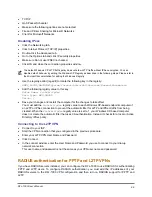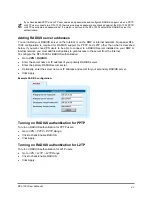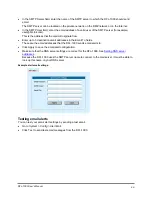
between the VPN client and the VPN gateway that is destined for the internal network is routed across
the Internet in the VPN tunnel.
Example VPN Gateway policy configuration
Description
Example
setting
Source IP
address
See Example VPN Gateway IP Addresses
). Main_Office
Destination IP
Address
The Internet IP address of the client (
).
VPN_Client
VPN Tunnel
Name
The name of the VPN tunnel to be created between the VPN gateway and the
VPN client (
See Example VPN Tunnel configuration
Client_VPN
Complete the following procedure on the VPN gateway to add the VPN policy:
•
Go to
VPN > IPSEC > Policy
.
•
Click New to add a new IPSec VPN policy.
•
Select the Source IP address, Destination IP address, and the VPN tunnel to add to the IPSec VPN
policy.
•
Click OK to save the VPN policy.
Configuring the VPN client
The VPN client PC must be running industry standard IPSec Autokey IKE VPN client software. D-Link
recommends the SafeNet/Soft-PK client from IRE, Inc.
Configure the client as required to connect to the VPN gateway using an IPSec VPN configuration. Make
sure the client configuration includes the settings in
. These settings should
match the VPN Gateway configuration.
VPN client configuration
Description
Example
Setting
VPN Tunnel Name
Should correspond to the VPN tunnel name used on the VPN gateway.
Client_VPN
Remote Gateway
The External IP address of the VPN gateway.
1.1.1.1
Keylife
The Client key life should match the VPN gateway key life.
100
Authentication
Key
The Client authentication key should match the VPN gateway authentication
key.
ddcHH01887d
Manual key exchange IPSec VPN between two networks
DFL-1000 IPSec VPNs can be configured to use Autokey IKE and manual key exchange. In most cases
the Autokey key exchange is preferred because it is easier to configure and maintain. However, manual
key exchange may be necessary in some cases for compatibility with third party VPN products.
Use the following procedures to configure a VPN between two internal networks protected by VPN
gateways that use manual key exchange (for an example, see
Example VPN between two internal
). Each internal network can be protected by a DFL-1000 VPN gateway or one of the networks
can be protected by a third-party VPN gateway.
This section describes:
•
•
Adding internal and external addresses
DFL-1000 User’s Manual
54


